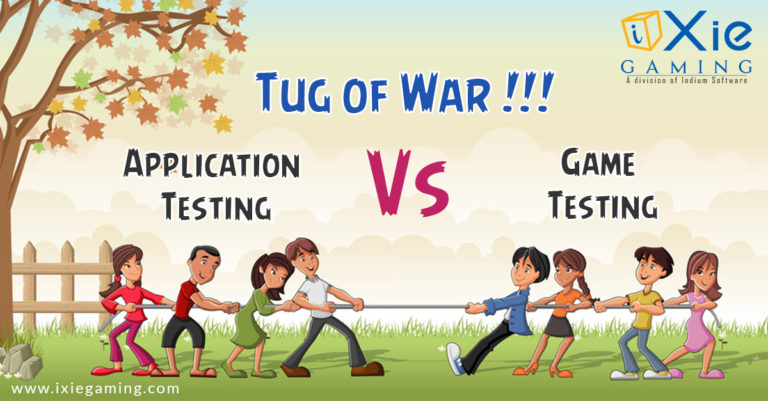Exciting as well as essential, game testing throughout the development process is a step that must be taken to deliver a high-quality experience to the user. The exhaustive testing process is the secret to the success of an incredible number of video games now available.
Quality assurance, often known as QA, is an extremely important process that ensures a problem-free gaming experience and the absence of annoying bugs and other issues. In this article, we will examine important tips and strategies that will allow you to improve the efficiency of the console game testing process you are responsible for. Let’s dive in.
Develop a Comprehensive Game Test Strategy
It is vital to have a complete game testing plan to get the most out of your efforts to test your game. This plan has to include essential components such as deadlines, tester selection, the number of testing cycles, the different types of testing that will be carried out, risk-based test analysis, service level agreements, the defect tracking process, and the reporting process.
You may make your efforts to test a game more productive and efficient by developing a well-defined approach, and you can also improve their efficacy.
Design and Execute Test Cases
Developing positive and negative test scenarios is essential to discover the maximum number of flaws and faults feasible. When developing effective and complete test cases, it is helpful to make use of testing strategies such as critical path testing, exception path testing, and more classic black-box testing strategies.
You will be able to find a wider variety of bugs and assure a more stable game if you run these test cases using a variety of software and hardware combinations.

Ad-Hoc Testing
Testers can immerse themselves in the game while following no particular checklist when doing Ad-Hoc testing because of the testing method’s characteristic free-form nature.
This method is geared toward discovering faults and problems that could pass unnoticed under more conventional, organized testing conditions.
Testers are better able to detect unforeseen problems and enhance the overall quality of the game if they take an exploratory approach to testing and naturally play the game.
Test Functionality
Testing for functionality determines whether or not the completed game performs in the manner it was first described. It entails locating and tracking frequent mistakes in the product’s aesthetics, user interface, sound, and mechanical parts.
At this point, the primary focus is on making certain that the game’s essential components are capable of full functionality.
Compatibility Testing
The testing for compatibility determines whether or not the game is optimized for a variety of screen sizes and whether or not it satisfies the fundamental criteria for its visuals, software, and hardware.
You can guarantee that players on all platforms will have a nice and consistent experience with the game by testing it with a variety of hardware and software combinations.
Progressive Testing
The purpose of progressive testing is to evaluate the stability of the game while it is being played linearly, without any interruptions or crashes. The focus of testers is on locating script-related issues that may impede the player’s progression through the game.
You may make a gaming experience that is fluid and immersive if you do comprehensive progressive testing throughout the development process.
Regression Testing
It is essential to do regression testing to locate any new defects that may appear after fixing current bugs.
Testers will retest problems that have already been fixed to validate that the problems have been fixed effectively and to identify any unexpected consequences that may have been produced by the remedies.
You can keep the overall quality of the gaming experience consistent and dependable by undertaking exhaustive regression testing.

Cleanroom Testing
The use of cleanroom testing is especially beneficial in situations in which it is challenging to pinpoint recurring defects. This method assists in locating the underlying cause of bugs and other types of mistakes that may have evaded notice until now.
You will be able to improve the quality of the game you give to customers as well as the productivity of your testing efforts if you use cleanroom testing practices.
Exploratory Testing
The testing team breaks from the pre-established test cases to conduct exploratory testing, during which they instead dynamically explore the game system. This technique emphasizes imagination and inventiveness, enabling testers to discover flaws that were not anticipated.
Exploratory testing is something that must be done before making a gaming application available to the general public to get useful input and improve the overall quality of the game.
Tree Testing
Tree testing is a technique for evaluating video games that is similar to usability testing. It helps organize test cases and choose the right collection of tests that correspond to particular changes in the code. Planning website layouts and menu structures are two areas where Tree Testing shines. As a result, players will have a better grasp of the game’s more intricate mechanics.
Tree Testing is an approach to testing that does not call for the development of wireframes or the organizing of material beforehand. Tasks and trees, which are essentially menus and guides, are the only things it uses. Potential deviations can be found through Tree Testing, especially in cases where a function interacts with other game rules, functions, or objects.
Record and Document Test Results
It is necessary to document the test findings in great detail to gain a better understanding of the flaws that were discovered during testing and to make review and analysis more efficient.
Make use of images or videos to capture test findings and ensure that testers, developers, and stakeholders all have a clear line of communication with one another.
Conclusion
The use of these key techniques and tactics can assist boost your console game qa process, guaranteeing that gamers will have a gaming experience that is of high quality and pleasant.
You may improve the overall quality of your console game as well as its chances of commercial success by getting a head start on development, carrying out exhaustive testing, attending to performance and localization concerns, and keeping open lines of communication.






